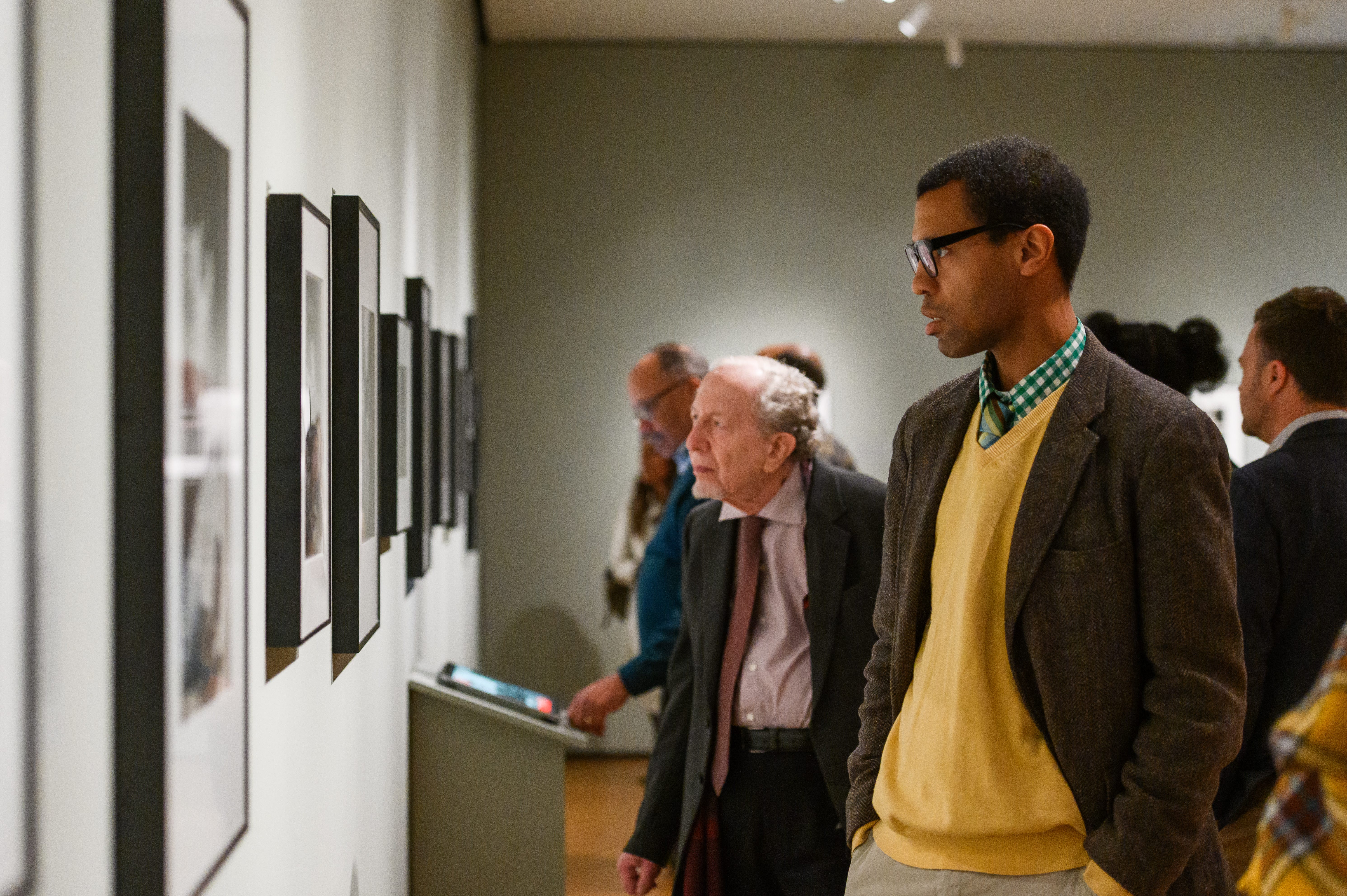Discover the Pioneering Early Photographs of Gordon Parks
- Blog Post
- Exhibitions

Attendees at CMA’s Gordon Parks: The New Tide, Early Work 1940–1950 Opening Influencer Event.
Photographer Gordon Parks considered his work during the 1940s to be the benchmark for his 60-year career. Gordon Parks: The New Tide, Early Work 1940–1950 documents the importance of Parks’ early experiences in shaping his groundbreaking, passionate vision. Featuring around 120 works, the exhibition traces his rapid evolution from an accomplished, self-taught photographer to an independent artistic and journalistic voice widely communicating a meaningful and coherent understanding of critical social and cultural issues.

Gordon Parks: The New Tide, Early Work 1940–1950 incorporates in-depth selections from Parks’s photographic essays, including the Tuskegee Airmen’s contributions to the war effort, the results of school segregation in his hometown, the world of a 17-year-old Harlem gang leader, and the story of Ella Watson, a government charwoman.

Parks’s famous photograph Washington, D.C. Government charwoman portrays Ella Watson, a black woman who worked at night cleaning the offices of the federal agency that employed Parks as a photographer. Watson stands erect and stoic in front of the American flag, flanked by the tools of her trade: the broom and the mop.
Parks took the image in July 1942; years later he retitled it American Gothic. He offers a documentary, African American counterpoint to Grant Wood’s well-known painting of a fictional American farm couple exemplifying rural life and values. Both portraits honor hard work, but the rewards reaped by the duo in Wood’s painting would have no doubt exceeded those earned by Watson, who after 26 years of cleaning government offices could advance no further because of her skin color. Watson’s now iconic portrait did not appear in print until March 1948 when it was published in Ebony, a picture magazine founded two years earlier and aimed at the African American market.
Included alongside a number of individual images are the artist’s contact sheets, which contain positive prints of several negatives on a roll of film. Intended to allow him to quickly scan the results of a shoot and easily share them with photo editors, the contact sheets offer viewers unique insight into Parks’s working practice and thought process.

“Gordon Parks was drawn to photography when he realized, as he later recollected, ‘that the camera could be a weapon against poverty, against racism, against all kinds of social wrongs,’” said Barbara Tannenbaum, curator of photography and chair of prints, drawings, and photographs. “In the span of a decade, he went from working as a railroad porter to becoming the first African American staff photographer at Life magazine.”

Self-taught, he became a brilliant portraitist and a master of the photo essay. Having personally experienced racism, poverty, and discrimination, he understood and empathized with those whose stories he so powerfully conveyed in his images. Parks’s work for the United States government and the new picture magazines such as Life and Ebony helped influence social change in America. This exhibition not only chronicles the start of his groundbreaking career but also provides insight into a particularly tumultuous decade in American history.
Organized by the National Gallery of Art, Washington, in collaboration with The Gordon Parks Foundation, Gordon Parks: The New Tide, Early Work 1940–1950 is on view for free at the CMA through June 9, 2019, in the Kelvin and Eleanor Smith Foundation Exhibition Gallery.
Check out photos of attendees at the opening influencer event for Gordon Parks: The New Tide, Early Work 1940–1950. Gordon Parks: The New Tide, Early Work 1940–1950 is open NOW! Free.






















